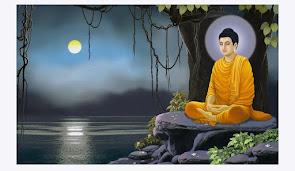The chief aim of Buddhist education is all round development of child's personality. This includes his physical, mental, moral and intellectual development. The other aims of Buddhist Education are to make a free man, a wise, intelligent, moral, non-violent & secular man.
Main points of Buddhism and education
Period 600B.C. to 600 A.D. Institutional organisation.Major tenets of Buddhism
(1) The teachings of Buddha was mainly oral. (2)Buddha’s philosophy are described as ‘Tripitakas’- (i) Vinayapitaka – Rules of conduct
(ii) Suttapitaka – Buddha’s Sermon
(iii) Abhidhammapitaka – Exposition of philosophical theories.
Aims of Education
(1) Development of personality
(2) Physical and intellectual development
(3)Religious and spiritual development character building
(4)Promotion of social efficiency and happiness
(6)Presentation and spread of culture
Buddha believes in Law of Karma. Present existence of the individual is the effect of past Karma.He believes in Rebirth.
Nirvan – It is the state of great pleasure and peace which can be attained through wisdom goodness and knowledge.
Primary education
The age for starting primary education was 6years. Teaching method was oral and cramming was emphasised. The medium of instruction was Pali language.
System of Education
In Buddhist period, students have to stay in Sangha or Viharas. Students have to present themselves before the teacher to ask for permission which is known as ‘Pabbja’ which means ‘to go out’.The boys went out of their families and joined the monasteries. • After admission to Sangha, they could remain a monk, leaving their former caste, dress, character etc. All the castes were allowed to get admission in the monasteries
8. Pabbja SamskarPabbja Samskar Minimum mandatory age for entering Viharas was 8 years. The entrance was permitted to students after shaving their heads, wearing yellow clothes and requesting the head monk of the Sanghas to allow them for admission.
Rules for students
Not to kill any living being.
Not to accept anything given to him.
Live free from the impurity of character.
Not to tell a lie.
Not to use any intoxicating thing.
Not to take food in improper time.
Not to speak ill of anybody.
Upsampada
After completion of education of 12 years at the age of 20 years the Monk had to undergo the ritual ‘upsampada’and then he become permanent member of ‘Sangha’ But only those Monks who had enough of spiritual knowledge were taken to Sangha.
Teachers were responsible for the proper education of students. He had to look after their needs affectionately.
School Administration
All the educational schemes were conducted by Sanghas situated in monastries and viharas.
Curriculum
Budddhist education was mainly religious and its aim was to attain Nirvan.The curriculum was religious which included teachings of Buddha and Dharma-shastras and Sutta,Binaya and Dhamma Pitak.
Methods of teaching
Method of teaching were based on oral dicussions,preaching,repetition, debates were used as techniques of teaching and learning. Seminars were also conducted to discuss major issues. Mental and moral development was emphasised to attain Bodhisattva. Although art of writing was developed but due to shortage of writing material the method of teaching was verbal. The methods of teaching were question –answer, discussion,logical arguments,tours,conferences arranged on full moon day and first day of month.
The medium of instruction was common language. The centres of education were Takshshila, Nalanda and Kashi.







No comments:
Post a Comment